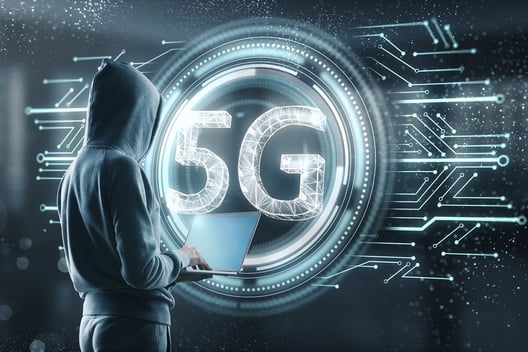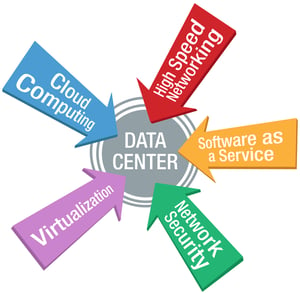 Fifth-generation (5G) is no longer a network for the future rather a reality, as markets have already begun switching and aligning their businesses to the technology. The technology has the mind-boggling potential of fostering an inter connectivity environment, sustaining economic growth, and elevating the use of the Internet of Things (IoT). Also, it offers tremendous opportunities, such as increased bandwidth, high reliability, lower latency, and high data speed.
Fifth-generation (5G) is no longer a network for the future rather a reality, as markets have already begun switching and aligning their businesses to the technology. The technology has the mind-boggling potential of fostering an inter connectivity environment, sustaining economic growth, and elevating the use of the Internet of Things (IoT). Also, it offers tremendous opportunities, such as increased bandwidth, high reliability, lower latency, and high data speed.
But with its plethora of benefits, 5G technology presents new and sophisticated cyber-security threats that your business must mitigate. According to AT&T Cyber-security Insights Report, only 22 percent of companies across the world have put in place policies to counter the 5G network security risks. Read on to find out how the 5G network will influence how you design the cybersecurity of your business.
Cybersecurity risks of the 5G network
5G technology mainly differs from traditional networks in four ways, which  makes it susceptible to network security risks. Here is a look at the critical network security risks exacerbated by technology.
makes it susceptible to network security risks. Here is a look at the critical network security risks exacerbated by technology.
1. Distributed routing
The traditional network technologies are hinged on the centralized hardware-based switching system. They follow the hub-and-spoke configuration design where data traffic passes through limited hardware choke points. The centralized hardware-based switching system makes it easier to inspect, quarantine, and clean the existing data packets.
The 5G technology is hinged on a software-centric switching system where digital routing is distributed. The distributed web of digital routers in the network disseminates the cybersecurity tasks to the different network nodes. Thus, chokepoint controls and security protocols inspections will be impossible in 5G networks.
2. Network virtualization
The 5G technology departs from the traditional networks by virtualizing high-level network functions, previously done by hardware appliances. The tasks ride on conventional operating systems and Standard Internet Protocol. The standard building block systems and protocols will inadvertently hand hackers the convenient tools to exploit network virtualization negatively.
Thus, short-range and small cell antennas will become a hard target for hackers, while the cell sites will have to rely on the Dynamic Spectrum Sharing (DSS) function of the 5G network. DSS involves bandwidth sharing between data streams, thus increasing cybersecurity risk. Due to the dynamic shift of  the network, you will have to use dynamic cybersecurity controls to mitigate the varying cybersecurity risks that your business faces.
the network, you will have to use dynamic cybersecurity controls to mitigate the varying cybersecurity risks that your business faces.
3. Bandwidth expansion
The 5G’s technology speed is 100 times that of the 4G due to the expansion of its bandwidth. The speed of the technology is unimaginable as the 4G network has been effective in handling heavy data functions. However, with the introduction of 5G technology, downloading movies will not be a matter of minutes but seconds.
The majority of cybersecurity solutions solely rely on real-time network traffic monitoring to identify potential network security threats. The efficiency of these solutions depends on bandwidth limitations to keep up with data traffic. The expansion of bandwidth will, therefore, push the existing network security solutions to their limits, thus, rendering them obsolete and inadequate.
4. Sneaky cyber attacks
Internet of Things (IoT) has increasingly brought a high number of workplace and household gadgets in the online realm. The introduction of 5G technology in the markets will only spike this number. The flooding of these devices will introduce new backdoors providing hackers with channels to infiltrate and attack your business networks.
The high number of smart internet-enabled devices in the market today, such as door locks, light bulbs, and office desks, will be used by attackers as endpoints to your business networks. This potential will, in turn, make it ![]() difficult to arrest and pre-exempt cyber-attacks, especially with the existing cybersecurity strategies.
difficult to arrest and pre-exempt cyber-attacks, especially with the existing cybersecurity strategies.
Securing your business’ 5G network
Incorporating 5G technology in your business is not a question of if but when bearing in mind the benefits that the technology tags along. Below are the cybersecurity steps that you will have to take to secure your business' 5G network.
- Automated and virtualized security controls: Due to the high speed of the 5G network, arresting security threats as they happen will be a tall order. To mitigate the risk, you will need to incorporate automated virtualized and remediation controls in your business.
- Machine learning and artificial intelligence: The 5G technology will generate large volumes of data, which will be impossible for a person to monitor. That’s why you will need to incorporate machine learning and threat detection of artificial intelligence in your business to mitigate the problem.
- Network security shared model: Although 5G technology has in-built security features, it doesn’t mitigate all the network security threats. Thus, you’ll need to seek help from a managed service provider to help you organize your business security responsibilities.

Fifth generation’s cybersecurity mitigation measures are not the preserve of the government and telecommunication service providers, but also your own. You must, therefore, come up with effective measures that will adequately address your business’ security concerns. The tips outlined above will help you secure your customer’s and essential business data.









